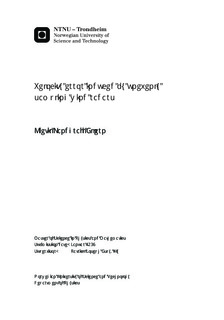| dc.description.abstract | Measurements of atmospheric winds in the mesosphere and lower thermosphere (MLT)region using a SKiYMET radar started in Trondheim (63.4 N, 10.4 E) in September2012. This meteor radar utilizes the ionized trail from meteors entering the atmosphereto observe a line of sight velocity og the wind, distance from radar as well as zenith and asimuth angle of the wind. By collecting data over a period of time (typically bins of one hour) one can use these data to deduct the zonal and meridional component of the atmospheric wind during that period.The number of meteors that are observed during this period of time will have daily andseasonal variations and at times the centroid time of arrival of the meteors can differ from the centroid time of the bin (bin time). Since the bin time is commonly used for analysis of the wind measurements, this thesis analyses the error induced by assuming the bin time is the correct time. By looking at 11 months of data the typical difference between real time and bin time has been analyzed, and an induced wind error has been deducted by comparing the measured wind to a linearly interpolated wind using the real time of arrival. Using 3 hour bins the mean magnitude of the time error was found to be 9-11.7 minutes at the altitudes 81-99 km (6 km altitude bins). This leads to a mean induced error of 2.5 m/s at 81-87 km, 5.6 m/s at 87-93 km and 5.7 m/s at 91-99 km. In 5.4% of the measured components this time induced wind error was found to be larger then the error in the measured wind components.The connection between the time error and the meteor count rate was analyzed, and alsothe connection between the meteor count rate and the atmospheric ionisation measure Kp.Two example analyses were done using both real time and bin time for the measurements.The semidiurnal atmospheric tide was found for 11.09.2012-11.08.2013 each day using3-hour bins, and also for October 2013 using 1-hour bins. The difference between thetwo approaches was generally low in both examples, however significant differences wasobserved. Although the errors due to the two time bases are small for the 35 kW system at Dragvoll, where high meteor count rates (typically between 8000-17000 meteors per day) ensure a more even distribution across the bin, the differences between these are likely to be more prevalent for a typical low power system (6kW), where the meteor count rates can be up to a factor of four lower. Thus, for comparisons between system based on different count rates, winds and tides based on real time should be used. | nb_NO |

